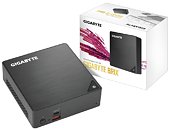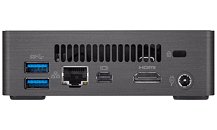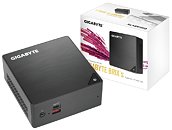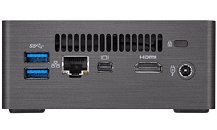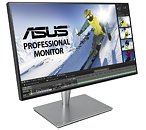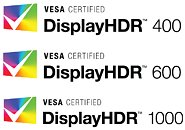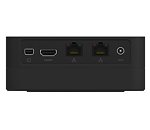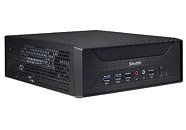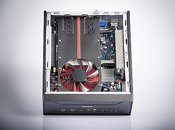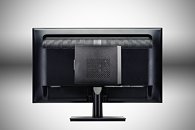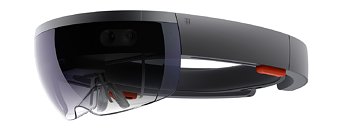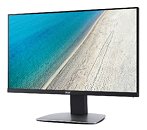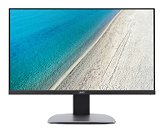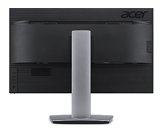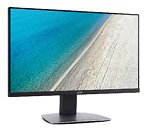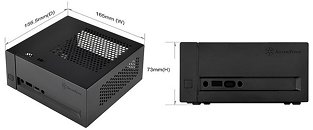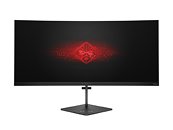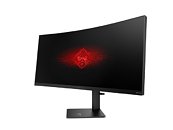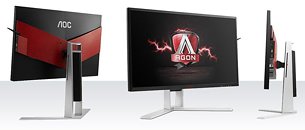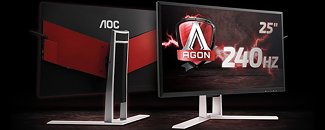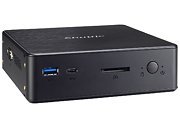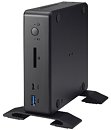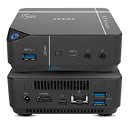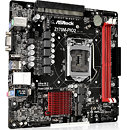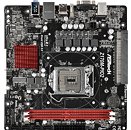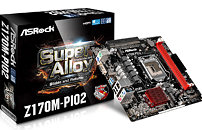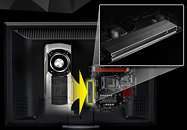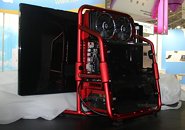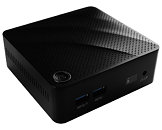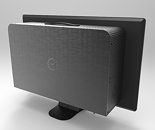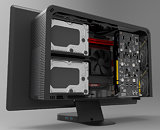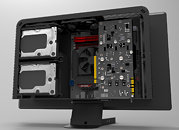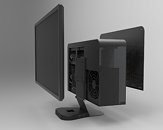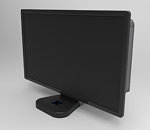
GIGABYTE Intros BRIX Mini-PCs with 8th Gen Core Processors
GIGABYTE today launched four new BRIX mini-PC models featuring 8th generation Intel Core processors. These include the GB-BRi5-8250, the GB-BRi7-8550, the GB-BRi5H-8250, and the GB-BRi7H-8550. The GB-BRi5-8250 and the GB-BRi7-8550 are built in a more compact 0.46L (34.4 x 112.6 x 119.4mm) chassis, while the GB-BRi5H-8250 and the GB-BRi7H-8550, come in a slightly taller 0.63L (46.8 x 112.6 x 119.4mm), with added room for a 2.5-inch drive bay. As their names suggest, the GB-BRi5-8250 and GB-BRi5H-8250 are powered by the Core i5-8250U processor (4-core/8-thread, 1.60~3.40 GHz, 6 MB L3 cache, 25W TDP); while the GB-BRi7H-8550 and GB-BRi7H-8550 implement the range-topping Core i7-8550U (4-core/8-thread, 1.80~4.00 GHz, 8 MB L3 cache, 25W TDP).
The 0.46L models offer two DDR4 SO-DIMM slots, a 32 Gb/s M.2-2280 slot, a second M.2-2240 slot holding the pre-installed WLAN card, HDMI and mini-DP display output, two USB 3.0 type-A ports on the rear panel, and two USB 3.1 ports on the front-panel, including a type-C port; and network connectivity including a gigabit Ethernet connection driven by Intel i219-V controller, and Intel Dual Band Wireless-AC 3168 WLAN card with dual-band 802.11ac and Bluetooth 4.2. Stereo audio makes for the rest of it. The 0.63L models simply add to this feature-set with a 9 mm-thick 2.5-inch drive bay that has SATA 6 Gb/s interface. All models feature VESA mounting, so you can tuck them away behind your monitor. The company didn't reveal pricing.
The 0.46L models offer two DDR4 SO-DIMM slots, a 32 Gb/s M.2-2280 slot, a second M.2-2240 slot holding the pre-installed WLAN card, HDMI and mini-DP display output, two USB 3.0 type-A ports on the rear panel, and two USB 3.1 ports on the front-panel, including a type-C port; and network connectivity including a gigabit Ethernet connection driven by Intel i219-V controller, and Intel Dual Band Wireless-AC 3168 WLAN card with dual-band 802.11ac and Bluetooth 4.2. Stereo audio makes for the rest of it. The 0.63L models simply add to this feature-set with a 9 mm-thick 2.5-inch drive bay that has SATA 6 Gb/s interface. All models feature VESA mounting, so you can tuck them away behind your monitor. The company didn't reveal pricing.
